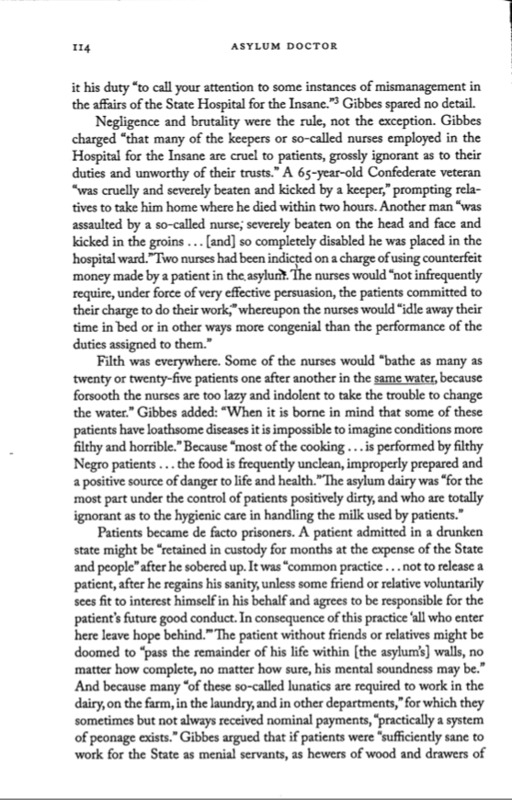19th Century South Carolina State Hospital Conditions

Letter from Columbia attorney A. Hunter Gibbes to the legislature.

Letter from Columbia attorney A. Hunter Gibbes to the legislature.
Among the nation’s oldest mental hospitals, the South Carolina State Hospital has a long and complicated history. The publicly-funded hospital was established in 1821 as the South Carolina Lunatic Asylum and served to house and care for the “idiots, lunatics, and epileptics” (Bryan, 592). Despite the honorable intentions of the founders of this hospital, reports of poor living conditions, patient abuse, and overcrowding tainted the reputation of the institution. Issues regarding patient equality also proved an obstacle for the hospital. The hospital refused to admit black patients until an act was passed in 1848, admitting “insane slaves or free persons of color”, but even still blacks were not given the same quality of treatment or facilities as their white counterparts (Bryan, 603). Their segregated quarters were frequently plagued by disease and overcrowding, and black males were required to perform disproportionate amounts of work compared to the general patient population. The accusations from the above source come from the period 1891-1914 when James Woods Babcock served as superintendent of the hospital. It was under Babcock’s administration that the institution was renamed the “South Carolina State Hospital” in 1896 from the original debasing and distasteful “South Carolina Lunatic Asylum” title. Despite what appears to be his best efforts to “modernize and improve the institution” (McCandless, 2016), under his administration the institution and its patients suffered. Diseases like tuberculosis and pellagra contaminated the living quarters and many patients ultimately died of diseases such as these rather than the original condition for which they first were admitted to the hospital. The hospital also often lacked sufficient resources or qualified staff. These issues led to chronically unsanitary living conditions, improper handling of food, and unhygienic practices such as reusing bath water.
Works Cited
Bryan, Charles S. Asylum Doctor: James Woods Babcock and the Red Plague of Pellagra. University Of South Carolina Press, 2014.
McCandless, Peter. “Babcock, James Woods.” South Carolina Encyclopedia, University of South Carolina, Institute for Southern Studies, 2016, www.scencyclopedia.org/sce/entries/babcock-james-woods/.
Babcock, James Woods. State Hospital for the Insane, Columbia, S.C.Publisher Not Identified, 1917.